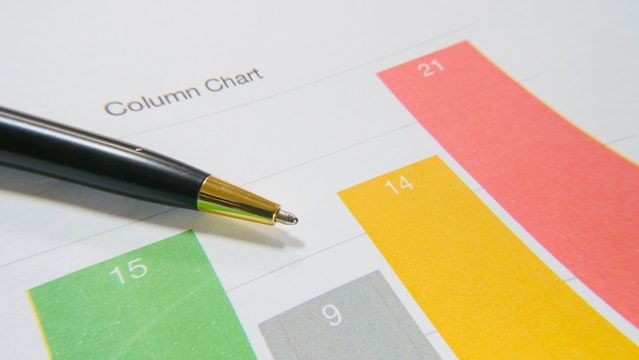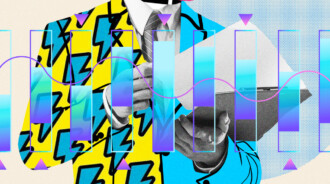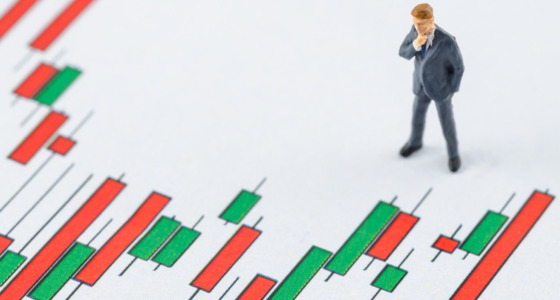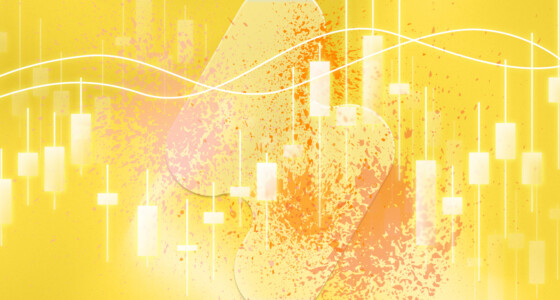

A stocks chart is the basis of technical analysis during exchange trading. They serve to visually assess the trends in quotes of a particular instrument, forecast price movements and analyze whose positions are stronger (supply or demand). Let’s figure out what charts we can meet and how to become a guru in understanding stock market charts.
Interesting! Stock chart reading is at the heart of modern technical analysis, which was founded in the early 20th century by Charles Dow, founder of the Wall Street Journal and the Dow Jones Index.
Stock graph types
Charts varieties and their combinations are widely used in trading by both experienced investors and beginners. Naturally, among all the tools available, there are many that are effective only for traders with extensive experience.
But there are basic stock chart types that can reveal information about an asset without unnecessary complications — for instance, stock market graphs. Here are the main ones:
Line chart. It represents the simplest image of the price movement, but at the same time, it reflects only one component (con: it’s not enough for making rational decisions).
Bar chart. It’s an informative visual variant in which the main indicators of interest are revealed: namely, the minimum and maximum price levels for the selected time period, as well as closing and opening prices.
Japanese candles stock graph. This is a popular tool that displays the same parameters as bars, but the visualization is more convenient.
Point-to-digit charts (tic-tac-toe). This graph also comprises price change bars, with a zero as a drop in the level by a given number of points, and a cross as an increase by a similar value.
Histograms. They are not used separately, but complement other stock market graphs, showing the volume of completed trades. The higher the line height, the more active an asset’s turnover in the market.
The first three types of trade charts are the most frequently used, so let’s figure out how to read and understand them.
How to read line charts?
So, how to read a stock chart made as a line one? This type is the easiest: a line is drawn along the time and price axes, reflecting the value of the quote that closes the trading period. It is used to track the general trend, i.e., whether assets are growing in price or falling. However, it’s impossible to make a decision without studying additional information. Optimal timeframes range from one day to several hours.
How to read bar charts?

It’s also important to understand how to analyze stock bar charts. The appearance of the graph is made up of vertical columns with serifs. Borders mean the values of the minimum and maximum quotes. The notch on the left is the opening price, the notch on the right is the closing price.
After understanding stocks, traders can view the exact figures by hovering the mouse cursor over the part of the graph of interest. Each bar of the stock chart represents quote fluctuations for the selected timeframe — it could be five minutes, one hour, one day. At the end of the next period, a new line is formed.

How to read Japanese candles charts?
This chart is less popular than a line or bar one, but it’s much older — its handwritten version was used back in the 17th century in China when selling rice and counting the actual price!
If you undertake the task of figuring out how to understand stocks, you should pay attention to Japanese candles first. The chart consists of rectangles with tails — these are the bodies of the candle and its shadow. Each individual element means quote fluctuations over a certain period of time.
The timeframe is indicated by the user in the settings. Reading stock charts, remember that as in the case with bar graphs, another candle is usually formed with the beginning of a new interval.
Visually, candles are perceived easier due to the contrasting coloration of their bodies in case of price growth and fall. In the basic version, black color means the price of the quote is decreasing, white color means growing. A trader can choose other shades by going to the settings of the trading terminal.
Convenience of different charts
Every tool has its positives and negatives. Exploring how to read stocks, be aware of the pros & cons of each graph:
| Advantages | Disadvantages | |
| Line | Simplicity and clear visualization of the overall trend | Not enough data to make a decision |
| Bar | Wide range of available data and detailed visualization of the overall trend | Difficult to immediately determine price direction in the short-term |
| Japanese candles | Allows to predict the short-term trend, provides a clear understanding of the direction of the price and complete information | Difficult to see the figures due to the three-dimensional image |
Conclusion
Thus, stock chart reading is a basic skill for every beginner. Understanding this topic is not hard, but you will have to spend a lot of time learning precisely how to analyze stocks correctly and quickly. This skill allows users to evaluate the general trend and the reliability of the selected instrument, as well as to confirm the correctness of the conclusions of fundamental analysis.








